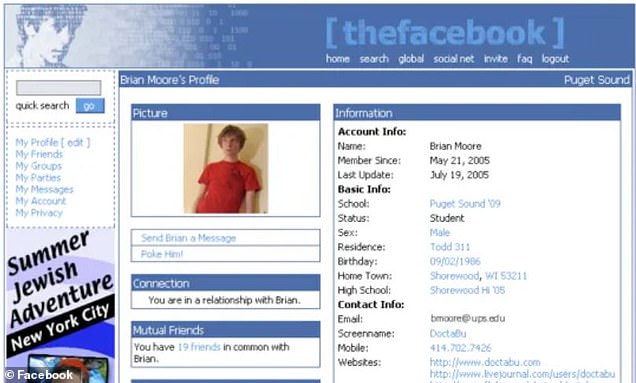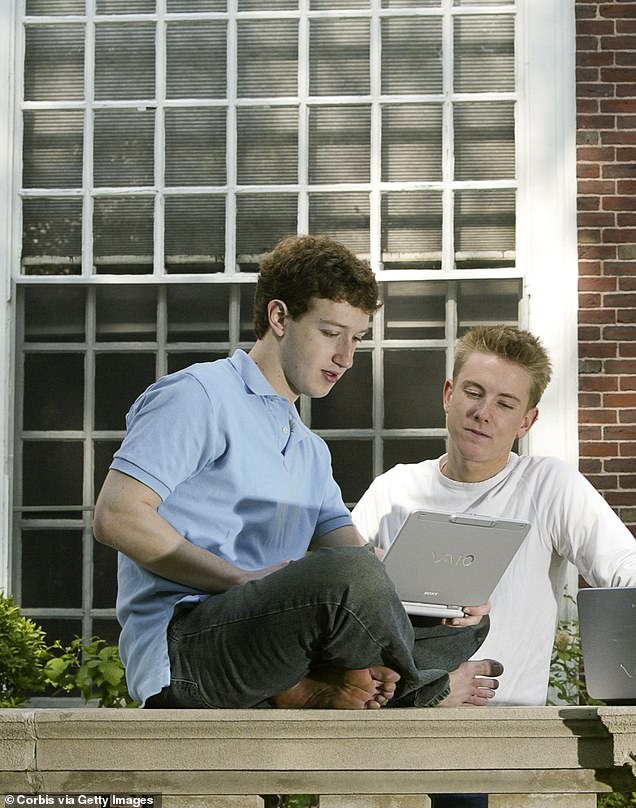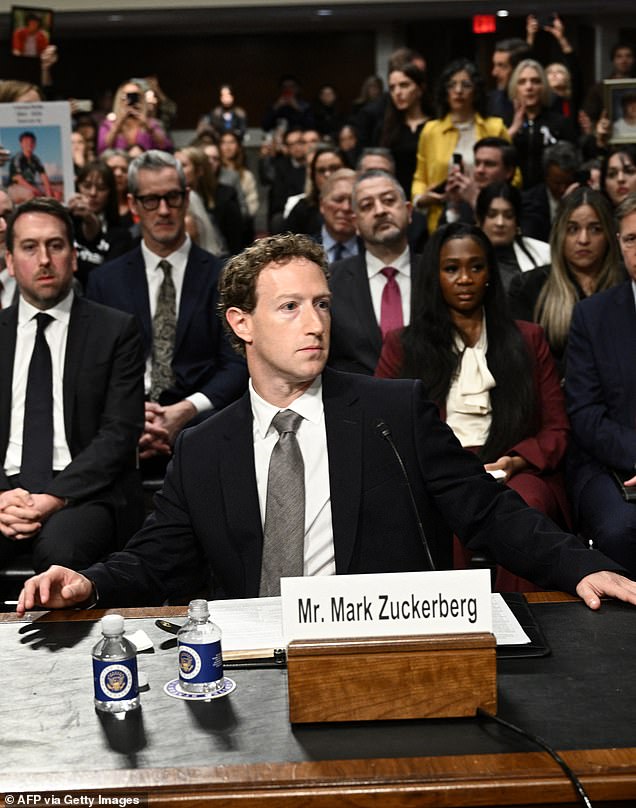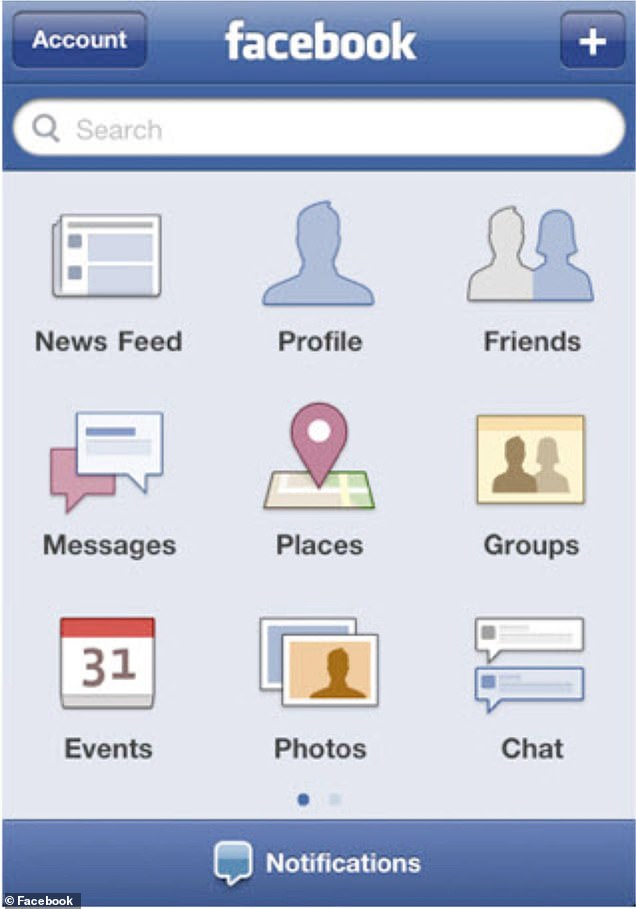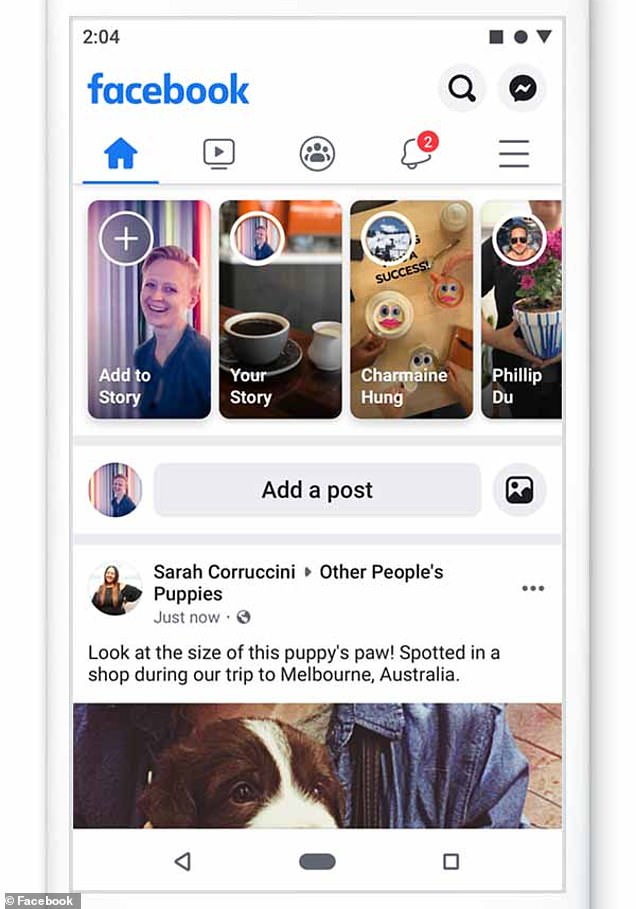Are you ready for some news that will make you feel old? Today Facebook, the social media giant that changed the world, turns 20 years old.
In those two decades Facebook’s founder, Mark Zuckerberg, has morphed from a nerdy frat boy into Silicon Valley’s billionaire bogeyman.
And, the product he created has undergone a no less bewildering transformation.
From the birth of the Newsfeed to the death of long-forgotten features, the Facebook we know has come a long way since its inception.
So, what is the oldest Facebook feature you remember? Read on to find out.
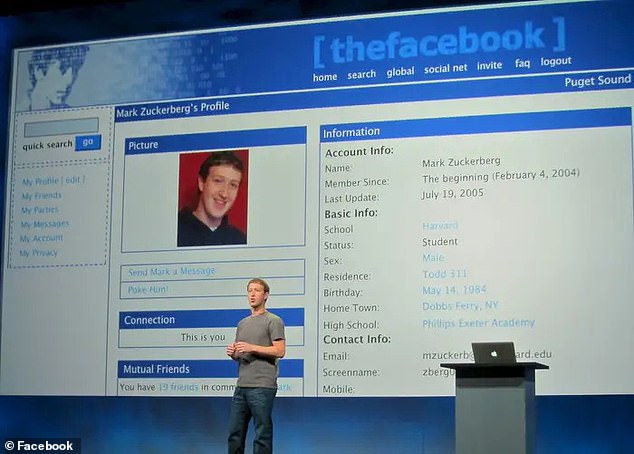
Mark Zuckerberg (pictured) launched Facebook in 2004 as a tool to connect students on college campuses, but the site is now 20 years old and a lot has changed
If you joined Facebook in 2004 (pictured left) even the 2011 version of the site (pictured right) may be almost unrecognizable
It’s been a long journey for Facebook founder Mark Zuckerberg (pictured) from building a website out of his college dorm (pictured left in May 2004) to testifying before Congress about the harms of the social media network he created (pictured right in January 2024)
Facebook – or The Facebook, as it was then called – was founded on February 4, 2004 by Mark Zuckerberg and his college roommates.
Back then, the website was meant to replace the real ‘Facebook’ which was a paper handout profiling Harvard’s students and teachers.
But, compared to the modern version of the site this original iteration might appear pretty bare bones.
There was no Newsfeed, no timeline, no walls or status updates, and only one picture per profile.
The site was simply a collection of isolated profile pages with a collection of biographical information
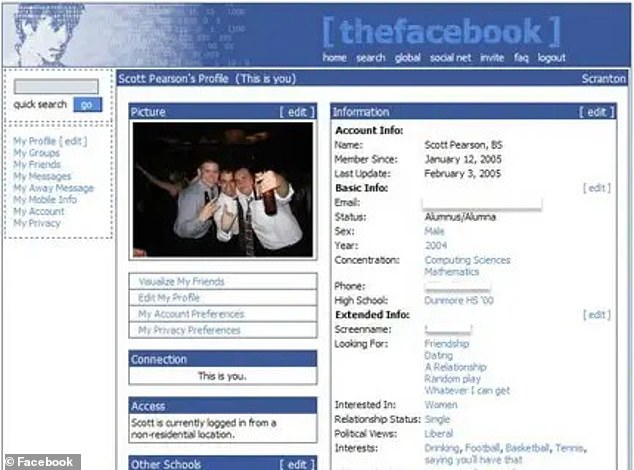
This is what a profile on ‘The Facebook’ looked like when the site launched in 2004. No thrills, only one picture, and not even a function for messaging. The site did have a now-removed function to visualise your social network
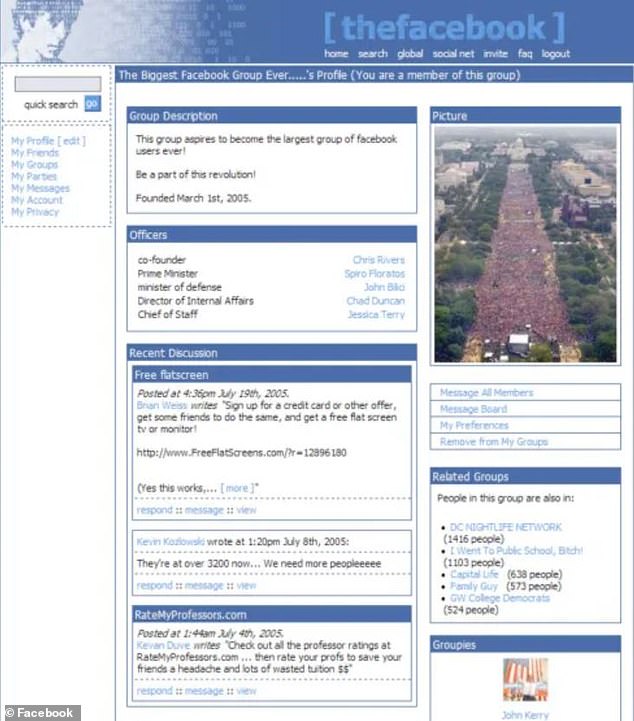
When Facebook launched it did have the option to create groups, like this one here. But they were very simple and didn’t include much information
But, unless you happened to be a university student in 2004, there is almost no chance that you ever saw this version of the site.
When The Facebook first launched users needed a @harvard.edu email address to even sign up, although throughout 2004 it came to other universities too, including Stanford, Oxford and Cambridge.
It wouldn’t be till 2006 that it became accessible to the general public – and anyone over 13 years old could sign up for the first time.
But, in those years between the site being founded and opening up to the public a lot of big changes were put in place.
The first is that Facebook dropped the ‘The’ in its name after buying the domain facebook.com for $200,000.
The other big change was that on February 5, 2006, only 20 days before Facebook would open up the world, the site added the first iteration of the Newsfeed.
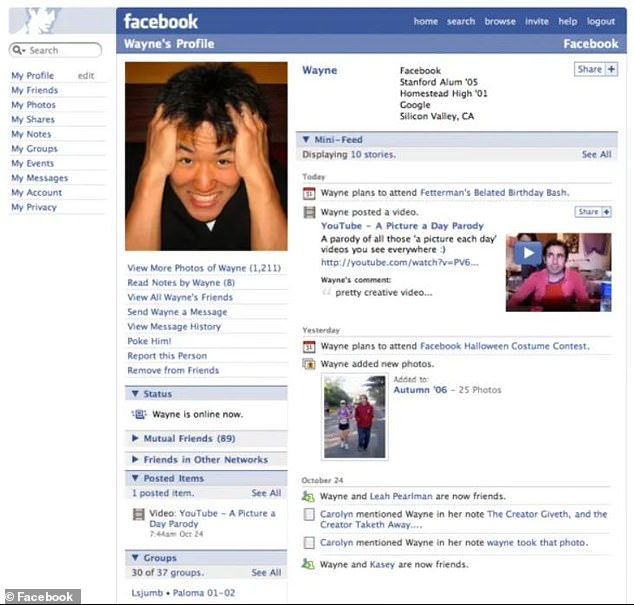
In 2006, when it was first made open to the public, Facebook added the Newsfeed and Mini Newsfeed (pictured) these collected all the updates to users’ profiles in one place
With this change, it marked the first time Facebook became more than just a collection of profiles and groups.
Now, users could see a list of every time someone in their network made a change to their profile.
In a blog post made at the time, Facebook wrote: ‘It updates a personalized list of news stories throughout the day, so you’ll know when Mark adds Britney Spears to his Favorites or when your crush is single again.’
But, in what would become a running theme of Zuckerberg’s career, users were outraged that what they had thought of as private information was suddenly made very public.
Groups such as Students Against Facebook News Feed amassed hundreds of thousands of members and Zuckerberg himself had to make an official response.
Yet, despite the strong initial pushback, the Newsfeed persisted and has become one of Facebook’s most instantly recognisable features.
If you were an early adopter of social media, this is probably very similar to the version of the site you remember.
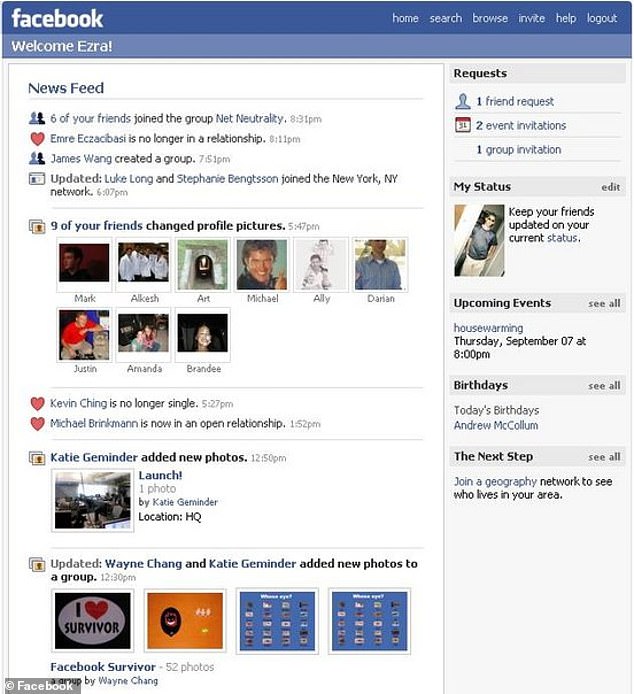
Facebook Newsfeed has come a long way since it was first created. In the original version (pictured) users only saw updates to their friend’s profiles, but in the modern version the feed is filled with content from third-parties
Another classic feature you might remember from this era of Facebook is the poke button.
In an early FAQ page from 2005, Facebook said the poke button was made because ‘we thought it would be fun to make a feature that has no specific purpose and to see what happens from there’.
But the pointless feature proved to be wildly popular with users launching into ‘poke wars’ with their friends, sending a flurry of digital nudges – or as a way of subtly telling their crush they liked them.
And, while you might think that the feature has been canned this actually isn’t the case.
The poke menu is simply hidden somewhere within Facebook’s web of settings and menus.
But by following this link, you can rediscover the Poke menu and start annoying your friends all over again.
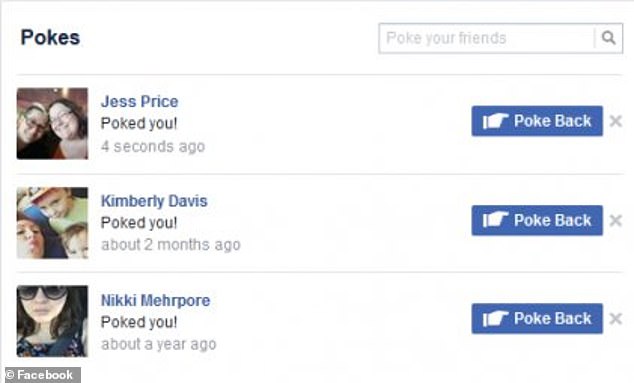
You might remember the Facebook Poke button as either a beloved memory or a long-forgotten annoyance. Facebook, for their part, says they added it because they ‘thought it would be fun to make a feature that has no specific purpose’
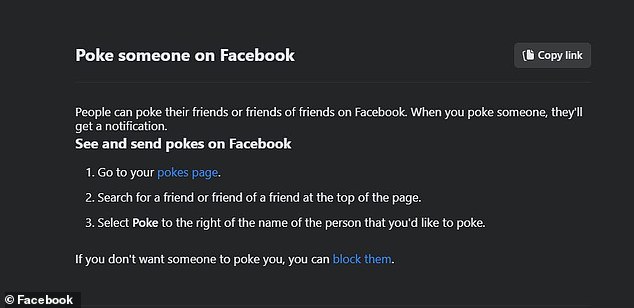
The Poke feature isn’t actually gone, it is simply hidden and is easiest accessed through a direct link
But this version of Facebook is still very different to the version we have today as the introduction of the Newsfeed preceded a number of further changes.
2008 was a year of iconic developments for Facebook.
That year company launched Facebook Chat, the messaging service that would one day be spun out to become Messenger.
Facebook also created the Wall and the first Facebook app for iPhone.
The Wall allowed users to build a collection of posts, media, comments, and messages that were linked to them.
In 2009, the homepage got a few cosmetic updates and the timeline began to update in real time.
And it was only in 2010 that Facebook first got a notifications tab in the top navigation bar.
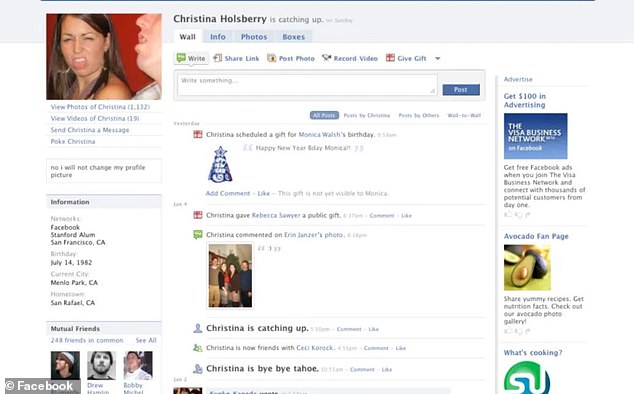
In 2008 Facebook first created the Wall. This iconic development allowed users to collect all the updates, comments, messages, and media related to them in one place
2008 also saw the launch of Facebook for iPhone (left). Compared to the modern version (right) this might seem clunky but it was hugely exciting for the time
In 2011, Facebook underwent another huge overhaul that did away with some old features.
This time, it was the introduction of the ‘Timeline’ as we know it today.
This replaced the old concept of profiles with a visual timeline that allowed Facebook users to tell the story of their life from their birth to the present day.
And, with the inclusion of recognisable features such as banner images, the 2011 version is still similar to what we have today.
As of today, Facebook retains most of the original features added in these early years.
Users still have timelines rather than profile pages, and content is still delivered by an algorithmically selected Newsfeed.
However, anyone who has been on Facebook recently will tell you, the user experience is quite different.
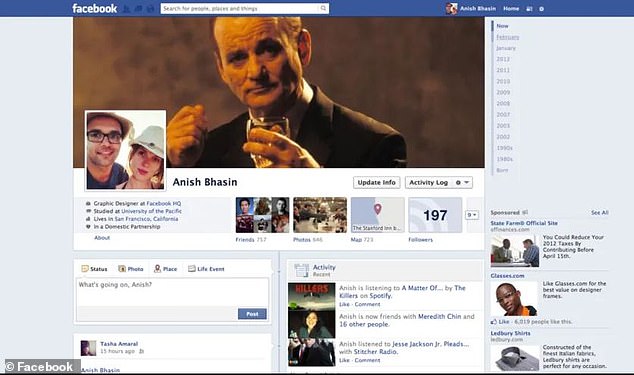
In 2011 Facebook finally replaced its old profiles with the Timeline (pictured) that we have today. This collected information about users from their birth right up until the present day
In the last decade or so Facebook has introduced a number of new features which have added different functionalities to the site.
In 2015, Facebook Live was introduced, bringing live video to the platform for the first time, and in 2016 launched the Facebook Marketplace.
But the most recent new features seem aimed at helping Facebook compete with its new rivals.
In 2018 Snapchat Evan Spiegel poked fun at Facebook’s habit of stealing ideas after the company introduced a host of features which appeared to be direct clones of their rival.
Facebook introduced filters in Facebook Messenger, an in-app camera, and Facebook Stories: all of which appeared to have originated with Snapchat.
More recently, in 2022 Facebook launched its short video service: Reels.
However, this was a fairly obvious attempt to cash in on the success of TikTok, Facebook’s fast-growing rival.
Behind the scenes, things have been changing quickly.
Since its origin, the Newsfeed selected which posts to prioritise based on algorithmic selection rather than chronological order.
But this simple algorithm was limited to updates about your friends’ profile updates, statuses, and posts.
Now, your Facebook feed is largely populated with adverts, accounts you don’t follow, and suggested content – all vying for attention thanks to powerful algorithms.
This all makes for a very different type of user experience, quite far removed from Facebook’s origins as a tool for connecting friends on campus.
Now Facebook faces criticism that its algorithm is responsible for promoting harmful and inflammatory content.
Recently, at a US Senate Hearing Facebook’s algorithm was even accused of promoting child sex abuse material to paedophiles.
Mr Zuckerberg apologised to families who said their children had been harmed by social media but insists that the company does the utmost to protect young users.

